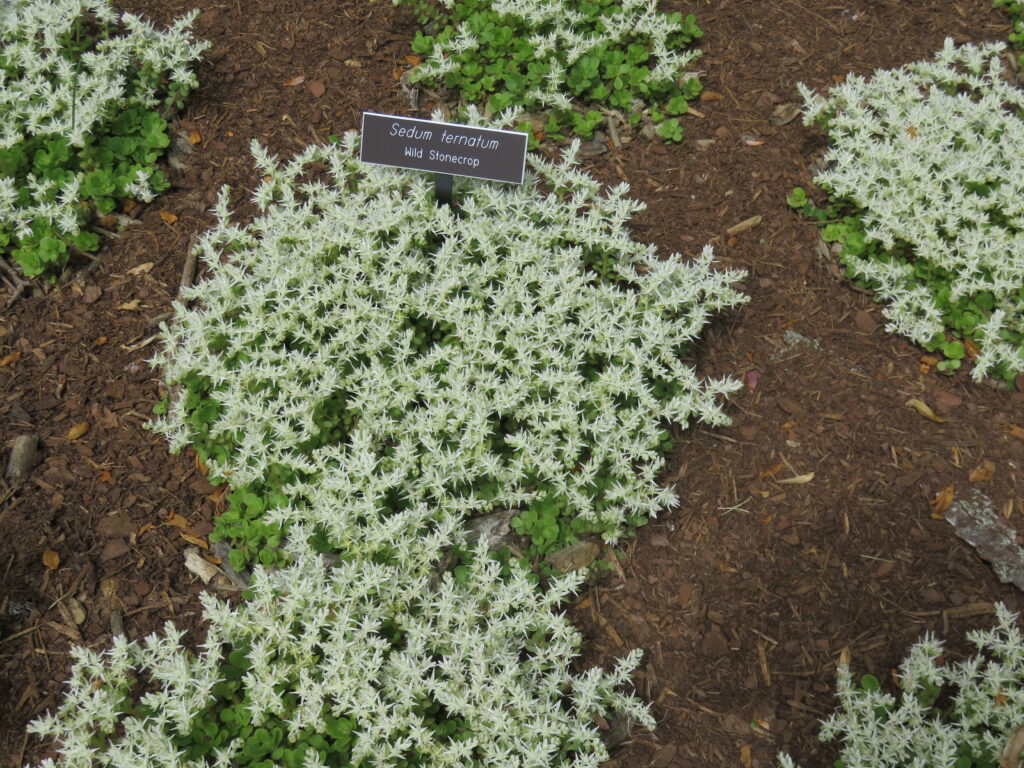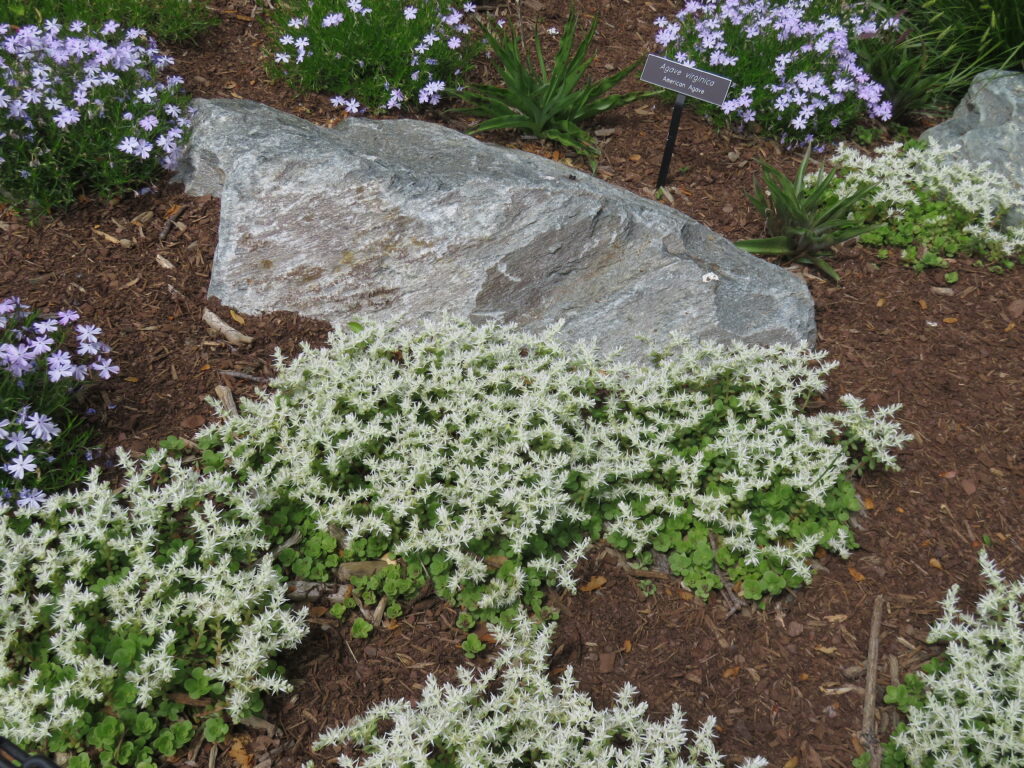Three leaved Stonecrop (Sedum ternatum), aka mountain stonecrop, whorled stonecrop), is a small, spreading, Eastern U.S. perennial (USDA hardiness zone 4 to 8). In its natural habitat, this native sedum is found in damp sites along stream banks, bluff bases and stony ledges. Stonecrops are in the Crassulaceae family. Mountain stonecrop grows 2-6 inches high and spreads by creeping stems which root at the nodes. Stems break away and die in winter, leaving newly rooted plants separated from the mother plant.

Mountain stonecrop features small, rounded, fleshy, succulent-like leaves (to 3/4″ long) grouped in whorls of three, giving rise to its common name “three leafed sedum”. Clusters of tiny white, star-like flowers (to 1/2″ wide) with purplish stamens appear on erect stems above the foliage in April and May.
Plant 6 to 12 inches apart in a site with partial to full shade in well-drained soil. It does tolerate full sun, seldom needs watering, and will grow in moist soils with good drainage. The plant tolerates shade and moist soils better than most other sedums as well as drought and heat, rocky and poor soils.
It is a low maintenance, easily grown groundcover ideal in average, medium, well-drained soils in full sun to part shade. Mountain Stonecrop matures to a 6-inch-high plant with a 1 foot spread and four-parted white flowers. Stems creep along the ground or over rocks, forming dense mats. A single flowering branch, 4 to 8 inches high, rises along with many shorter, leafier, non-flowering branches. Stems break away and die in winter, leaving newly rooted plants separated from the mother plant. Leaves tend to fall off easily; fallen leaves can be used to propagate new plants.

No serious insect or disease problems. Botrytis is an occasional problem. Although it spreads by creeping stems, unwanted plants are easy to remove with a hoe. Purchase plants at native plant nurseries.
Stems and leaves may be eaten raw when very young and tender. As stems and leaves age, but before the plants flower, the edible parts may still be eaten if they are briefly cooked. The sap can irritate the skin of some people and the leaves, eaten in quantity, can cause stomach upsets.

 Posted in
Posted in 
